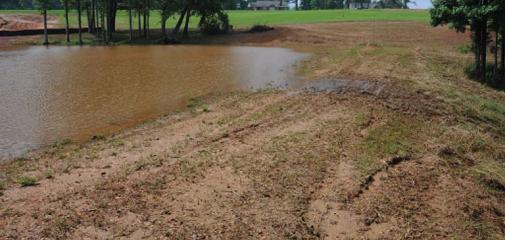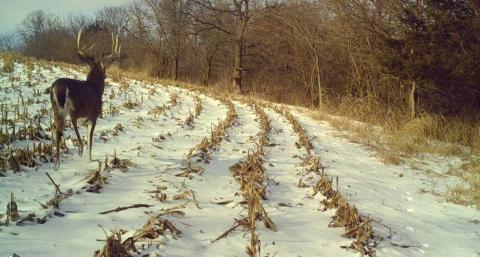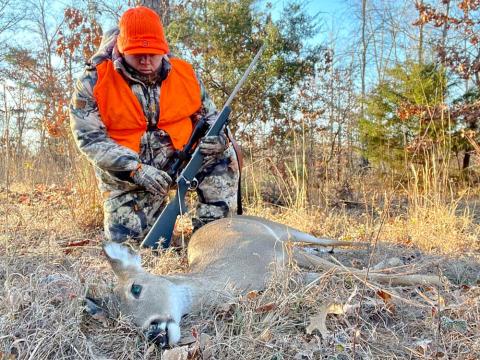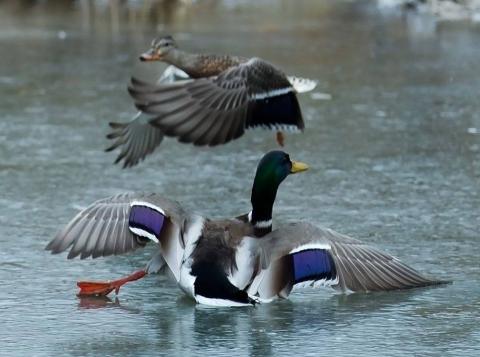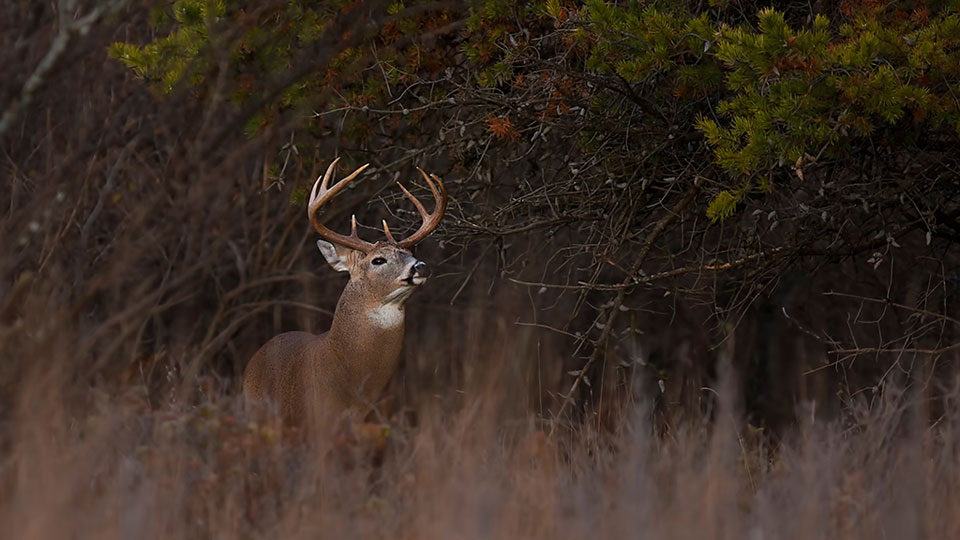
1. Thermal Refuges
These are areas where deer can escape some of the harshest winter weather or at least get protection from the worst of it. Warm season grasses are good for this in the South where there’s little snowfall. Large clusters of young conifers are best in northern areas. Adding some hinge-cuts for wind blocking can make them even better.
2. Bedding Areas
It’s great if you have natural bedding areas. Otherwise, you can create them by hinge cutting and completely felling some trees so they fall over each other but don’t form an impenetrable thicket. I also like to plant a few shrubs and white pines or spruce to provide a further “security” feeling for bucks if the area isn’t quite thick enough.
3. Staging Areas
These are places where deer gather near feed fields in the afternoon to pause and check for danger before entering. They should be somewhat open, so deer can see each other and any approaching predators. But if they’re too open, older bucks won’t use them until nearly dark. Add shrubs, a few hinge cuts, or an edge strip of Blind Spot if a potential staging area is too open.
4. Travel Corridors
A potential daytime travel corridor often needs a bit more cover for mature bucks to use during daylight. Do some hinge cutting or completely fell small, low-value trees for cover and to “steer” deer towards your stand. You can also plant a few conifers and shrubs where needed in open spots.
5. Viewing Shields
This is where you don’t want neighbors or vehicles to see and be tempted by your good bucks. Annual cover crops such as Blind Spot, Egyptian wheat, sorghum, and Sudan grass come up quickly and produce a shield in short order. For a longer-term solution, use pines or warm season grasses.
6. Escape Sanctuaries
Somewhat similar to bedding areas but in different locations, these are areas bucks flee to under pressure knowing they’ll be hidden. Make them with small clearcuts, clusters of pines, hinge cuts, dozer-felled trees, a patch of warm season grasses or a combination of these.
7. Security Cover In/Near Food Plots
Clean food plots are attractive. But those with a deadfall, brush, shrubs or thickets around them produce better daytime buck utilization. Plant Blind Spot in strategic areas to make deer feel more comfortable entering the plot during daylight, or do some hinge-cutting and shrub and conifer planting along the edges to induce a feeling of security for the animals.
~
For more GameKeeper tips, read “5 Tips for Improving Your Spot.” With most every state’s hunting season in full swing, GameKeepers are spending hard earned time in the stand. After a few hours of treestand time, you might start noticing a few adjustments that could improve your hunting success.
















